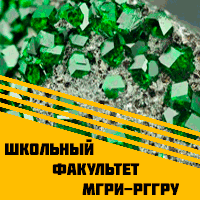Добрый день, Коллеги. Важное сообщение, просьба принять участие. Музей Ферсмана ищет помощь для реставрационных работ в помещении. Подробности по ссылке
Geomorphology / Геоморфология
In gathering together this series of readings in geomorphology, the objective has been to prepare a representative sample of modern Canadian research in this field. It may therefore appear unbalanced in favor of glacial and periglacial topics: in fact this is a true reflection of the interests of the majority of Canadian geomorphologists. As so much of the landscape bears the imprint of glacial activity, it is not unreasonable that those involved in the study of this landscape should concentrate in this area of the* discipline. One of the great advantages, which stimulates this research, is the presence in Canada of living examples of the processes that have played such a significant role in moulding the landscape of the more temperate regions to the south. Thus studies of the Barnes Ice Cap on Baffin Island, permafrost features in the McKenzie delta, and valley glaciers in the Rockies show that these areas are being used as vast laboratories in order to increase our understanding of processes that have a far broader significance and application than is at first apparent.
This abundance of potential research topics in glacial and periglacial landforms has attracted many workers — almost to the exclusion of many other significant fields. Thus, coasts and beaches, rivers, and aeolian features, together with their respective processes, have received comparatively little attention; yet the development of drainage systems and the action of wind have been two of the most important factors in modifying the post-glacial landscape. The extent to which changes have taken place since deglaciation is by no means fully understood, and more detailed and painstaking research is necessary before any precise statement of the degree and rate of erosion, transport, and deposition can be made. <...>




